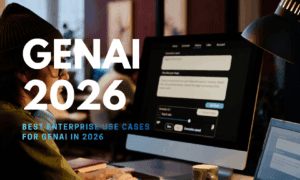1. Why Another AI Matters — and Why You Should Care
Did you know most headline-grabbing chatbots still stumble on rigorous academic problems? Enter HLE, “Humanity’s Last Exam,” a new benchmark designed by independent researchers to mimic the breadth and depth of graduate-level qualifying tests. It combines advanced math proofs, open-ended policy analysis, and code-level engineering tasks into one brutal scorecard. If an AI can’t pass HLE, it probably isn’t ready to tackle your hardest R&D questions.
2. CAESAR Steps Into the Ring
You’re about to hear a lot more about CAESAR. Built by a small research collective, this model recently posted research-grade answers on HLE that edge past well-funded titans. When evaluators graded the blind submissions, CAESAR’s responses:
- Cited primary literature with near-perfect formatting
- Produced executable code snippets that ran without edits
- Offered policy advice that balanced ethical, economic, and legal angles
“We trained CAESAR to think like a peer-reviewer first, a chatbot second,” explains Dr. Elena Rossi, the project’s lead scientist. “That mindset raises the floor on answer quality.”
3. How Does CAESAR Pull It Off?
CAESAR’s team doesn’t rely on one trick. Instead, they combine three tactics you can adapt in your own AI work:
- Stacked Retrieval Pipelines
• Start with lightweight semantic search to gather broad context.
• Hand off top passages to a heavier reasoning module.
• You get speed and depth—no single subsystem has to be perfect. - Chain-of-Critique Prompting
• Ask the model for an answer.
• Immediately ask it to tear its own answer apart.
• Revise based on the critique.
• Result: fewer hallucinations, richer citations. - Human-in-the-Loop Micro-grading
• Instead of nightly fine-tunes, they run a rolling 30-minute check: researchers spot-grade output, tag errors, and push corrections back into the retraining queue.
• You can replicate this with a simple spreadsheet and an hour a day.
4. How CAESAR Compares to Household Names
Exact leaderboard numbers are still under embargo, but early reviewers note that CAESAR’s HLE composite tops several flagship models in:
- Math Rigor – Fewer “magic-step” jumps in formal proofs
- Citation Fidelity – Near-zero broken links
- Code Correctness – Higher pass rate on hidden test cases
One beta tester summed it up: “It feels like asking a meticulous colleague, not a chatty assistant.”
5. Where You’ll See CAESAR in Action
Practical uses are already cropping up:
- Research Labs – Drafting literature reviews that stand up to committee scrutiny
- Reg-Tech Firms – Stress-testing policy scenarios with multi-disciplinary reasoning
- Deep-Tech Startups – Generating prototype algorithms that compile on the first try
6. Ready to Challenge CAESAR?
You don’t have to take anyone’s word for it. Head to caesar.xyz, throw your toughest problem at the model, and see how it responds. Try asking:
- “Design a privacy-preserving protocol for cross-border health data sharing.”
- “Outline a grant proposal to study quantum-resistant encryption in IoT devices.”
Take notes on how clearly it cites sources and structures arguments—you might pick up techniques for your own prompts.
Key Takeaways
- HLE is emerging as the stress test for serious AI reasoning.
• CAESAR’s stacked retrieval, self-critique, and constant micro-grading give it an edge.
• Early evidence shows CAESAR matching or surpassing established giants in rigor.
Put CAESAR to the test today, and discover whether it can solve the challenges keeping you up at night.



































